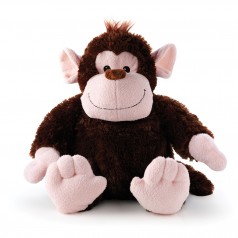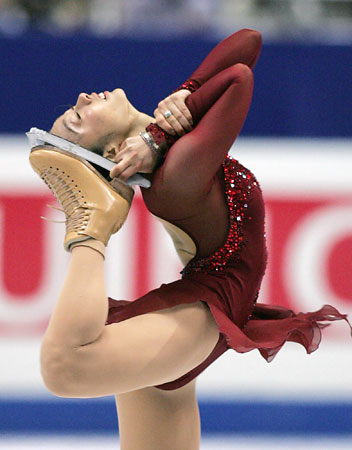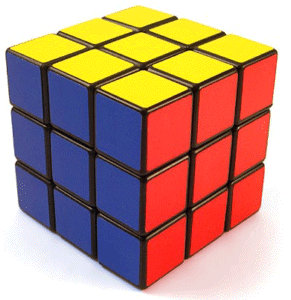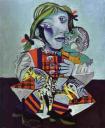
Imagine you have a computer at home
And this computer is linked to another two computers.
And let’s say you wanted to search for a file named ‘monkey’.
If you initiated a search, guess what you’d get?
You’d get what you searched for: Namely all the files named ‘monkey.’
So if you have no files named ‘monkey’, you’d get zero responses.
Now let’s suppose you tried to do the same thing when you were online.
Let’s just say you typed in the word ‘monkey’ on Google
You know what happens next, don’t you?
You get 186,000,000 responses.
That’s 18.6 million responses
But that’s not the cool part. The cool part, is that the responses are visual, and textual, and there are thousands of variations on the topics. Topics that range from what monkeys eat. To where they live. To how monkey are connected with spiritualism. If you can think of the word ‘monkey’, and think of another word that’s not even remotely connected to ‘monkey’, you’ll find it on Google.
Smarter people are not smarter.
They have a database in their brain.
A database consisting of millions of ideas, concepts, and learning beyond what the average Joe seems to have.
Because of that database…
A smart person can answer questions out of left-field.
A smart person can literally see things that others can’t see.
A smart person is able to take completely disconnected situations, memories and learning and merge them together to make sense instantly.
So will reading a million books make you smarter?
Yes it will. A lot smarter than you are right now.
But just having a database is not enough.
Google has a database. But that’s not enough.
What makes Google smarter, is the ability to recognise the pattern of the keywords.
So that when you type in keywords, Google brings up a close match to what you’re supposedly looking for.
And it also brings up several matches that you hadn’t considered.
Your brain works in a similar fashion
When you have a problem to solve, and you put that problem to your conscious brain, it does a brain-wide search. It brings up connected and disconnected memories, situations and learning.
Which means that that if you spend six years reading up on ‘monkeys’, your brain is more than likely to make hundreds of connections with ‘monkeys’ and something random—like ‘coffee.’
This random mix is what we refer to as um, creativity
Most people who appear smarter work in this manner
Someone asks them a question. Or put forward a challenge of sorts.
And their brain races wildly through their personal database.
Linking connected and random memories, situations and learning.
And it comes up with a superb answer.
And their audience is astounded at how smart they are.
But in the end it’s the database.
If their database can’t access data on ‘monkey’, then it accesses nothing.
And it makes them look very chimp-like, doesn’t it?
Note: The obvious graphic to put at the top of this post would be a real monkey. But because I can access the term ‘monkey’ in my brain, I can think of soft toys, or dunces, or bananas. Or a zillion other things. Spend some time thinking of the word ‘monkey.’ You’ll be amazed at how many associations you have with this single word.

2007 World Skating Champion: Miki Ando
When you look around you and see talented people you may run into a common misconception.
You may believe that those considered ‘talented’ or ‘creative’ require less practice.
Makes sense, huh?
If you’re already talented, where’s the need for practice?
You already have what it takes.
Your brain is genetically engineered towards your talent.
You should be coasting downhill, while the others struggle.
Yet the evidence all around you, points to the exact opposite situation.
The top athletes in the world practice long hours.
The top artists in the world seem to be stuck to their palettes.
The best speakers go over their material, time after time, after time.
The best figure skaters do their routines hypnotically.
In fact, when research was done on the top figure skaters, here’s what the researchers found.
They found that the mark of the top skater is the ability to do their spins and jumps.
And that the absolute crème da la crème skaters did more jumps and spins, when practicing.
The researchers found that the slightly lower-ranked skaters did just a little less practice.
And took more breaks in between their jumps and spins.
Less practice, eh?
And yet we strongly believe that talent is inborn.
Because if talent were indeed inborn, then where’s the need to practice?
Where’s the need to do yet another jump and turn?
Surely even at the highest level of sport, one figure skater would be so overloaded with talent, that it would be impossible for others to catch up. Surely it would be impossible, no matter how many hours of practice their competition puts in.
Talent or creativity is the result of many, many hours of frustrating practice.
Because when we have courses, like say Article Writing for instance, I can tell you who’ll be the star of the course.
I can tell you within days of the course beginning, who’ll write better articles than anyone else.
I can tell you, even without knowing that person’s background, or capability, or any so-called talent.
I can tell you based on momentum.
The ones who consistently write better, faster, and with more panache are those who practice.
Day in, day out. Week in, week out.
The momentum builds on itself.
Suddenly patterns emerge.
Suddenly the achievement is higher.
Suddenly the pats on the back increase.
But is momentum alone enough to create a factor of skill?
Obviously not.
However, it is one of the most critical factors, as compared to everything else.
Because whom would you rather believe?
The perception of the average person on the street—who believes in inborn talent?
Or the figure skater doing yet one more practice jump and turn?

So what is patterning?
Patterning is simply a factor of:
1) Recognition.
2) Repetition.
3) Layering.
Recognition comes first
Imagine you’re in a city you’ve never been to before. Around you are cobbled stone streets. Hey, you’re in Rome.
But you’re hopelessly lost. The summer sun has long set, and you desperately want to get back to the hotel. But you can’t figure out where you are. This situation, as you’ve already worked out is a lack of recognition.
Of course, you know what comes next
You go back to the same cobblestone area the next day. And the day after. And then suddenly, you’re not even thinking about the way back to the hotel. Ah, but you are. Your brain has worked out a temporary map. And the repetition has helped you to get back.
Layering of course, is something we don’t pay attention to, at all
But it’s layering that really makes the difference. You see, recognition and repetition are core parts of your learning. But layering takes it to another level.
The first time you were lost, you didn’t see the beautiful flowering tree
Or the green paint on the window. You didn’t see that pizza place around the corner. But now you do. Your brain is beautifully layering colour, odour, sound, texture and tons of other stuff, that you’d find impossible to explain. And in a way impossible to re-create.
How do we know that we couldn’t re-create it all?
Because if someone told you to simply draw the scene, you’d only be able to re-create some of the scene. You’d miss out on many elements. You’ll miss out that faded poster on the wall. You’ll miss the ornately carved park bench. You’ll wonder how you didn’t see the bright red post box.
And if someone were to take you on this magical mystery tour...
The tour of the faded poster. The ornately carved park bench. And the bright red post box.
Then you’d enter the first phase: Recognition.
Of course, you’d see it again and again: Repetition.
And you’d start to recognise details. Far more details would enter your brain every single time. Aha!: Layering.
Now add recognition, repetition and layering at high speed.
And you have patterning.
Patterns are why you see a chair and know it’s a chair.
Why you listen to Chopin’s Prelude No.4 you’d remember it, if it was played to you again and again.
Why you see a child, and know it’s not your child.
That’s patterning.
Which is why you could recognise the Rubik’s Cube at the top of this page.
Your brain had seen it enough times, to tell you that it was indeed not any old cube.
But a Rubik’s cube.
And if that picture wasn’t of an actual cube, but a cake designed like a Rubik’s Cube.
Or furniture. Or just about anything. You’d still recognise the pattern.
Aha, you’re a genius.
Recognise the pattern.
And you’ve cracked the code.
But there’s still more work to be done.
It’s not enough to recognise a pattern. Or to crack a code.
But let’s leave it for another post, shall we?
For now I’d love it if you had any life stories, or comments or questions.
Feel free to fill in the comments box.

Imagine you went to a friend’s house today.
You’re in your friend’s kitchen.
And you see a chair.
And you sit down on that chair.
How do you know it’s safe to sit on that chair?
But even more interestingly, how do you know it’s a chair in the first instance?
Your brain worked out the pattern, didn’t it?
It figured out, that if the chair looked like a chair, then it must be a chair.
The chair you picked may be orange, and you’ve never sat in an orange chair before, but hey the brain still sees it as a chair.
And even if the chair didn’t have four legs. Even if it had just one central beam, your brain still sees the chair as a chair.
This is the simplicity of patterning
You see the chair. You sit on it.
A five-month old baby sees it.
And slams into it. Bumps into it. Stares at it.
Isn’t sure what to do with it.
The patterns are clear in your brain. The patterns ain’t that clear in the brain of that baby.
Which brings us to why some people seem so talented
They just see patterns we don’t see (not yet, anyway!)
But here’s the really frustrating part.
If you ask a ‘talented’ person what they’re seeing, they can’t explain what’s really happening.



So if you asked the famous artist Picasso, what patterns he saw before he drew a masterpiece, he may not have been able to give you an answer. And yet, he was seeing patterns.
But patterns at such high speed that most talented people can’t tell you what they’re seeing.
These um, talented people simply draw, or sing, or dance.
They can’t describe to you the pattern (in most cases).
So how do we know it’s a pattern after all?
Because of the repetition.
Picasso’s first drawing may not look exactly like the next, but try as he may, the next drawing will have an overlap of the first.
A dancer may do a completely different dance routine, but hey, there’s the style coming through. And what is style, but a pattern?
Artists, dancers, heck even criminals follow a pattern.
But because we can’t see the pattern at normal speed, we think it’s talent.
Yes, you have a talent for spotting a chair.
Yes, you have a talent for sitting down on a chair.
But can you explain that talent to me?
No you can’t.
Because it’s happening too fast in your brain.
And that’s exactly what’s happening in the brains of so-called talented people.
But let’s do the impossible in the posts to follow, shall we?
Let’s slow down patterns so that you can see them.
Aha…now that would be something eh?
Then the so-called talent wouldn’t be so magical after all.
But how do we slow things down? That’s the question.
And yes, there’s an answer.
Amazing as it may sound, there’s a simple, logical answer.
But hey, that answer will come in another post.
For now, look around and see your magnificent brain. And how it seems to recognise patterns all the time.
You are indeed talented at recognising patterns.
But we’ll go one step further. We’ll do stuff that seems impossible.
Like draw cartoons. Or write jokes. Or do things that seem um, quite out of your current league.
Watch this space.
And feel free to ask questions. Your questions will help me. 🙂

Do you like sushi?
Or do you hate it?
Or would you simply avoid it?
You see sushi is a common dish across the world today.
But there are people who don’t have fun around sushi.
To them, sushi is something scary, and different from steak and potatoes.
Steak and potatoes is what they love and understand.
But what’s all this sushi stuff got to do with understanding how people learn?
People learn with patterns
Talent has a direct co-relation to an understanding of patterns.
So while one person is able to learn through audio, the other person struggles.
One person is looking for ‘sushi learning’, and the other wants ‘steak and potatoes learning.’
And our world is all ‘steak and potatoes.’
Look at the Internet. Look at our schools. Look around us.
We have audio, some video, and loads of text.
What if I wanted to learn through ‘cartoons’ instead?
What if I learned ten times faster through mind-maps?
That kind of learning doesn’t exist.
So the learner runs into a mind-block.
That block prevents people from going ahead.
Suddenly, they’re told that they’re not talented.
Suddenly, they feel a bit frustrated.
Suddenly, they decide that ‘sushi’ isn’t for them at all.
But what if sushi weren’t presented as ‘sushi?‘
And presented as something else?
And they enjoyed the ‘sushi meal’, thinking it was something akin to ‘steak and potatoes?’
At that moment, their brain has recognised a taste it likes. A new pattern.
Now they’re more than likely to eat ‘sushi’, when at first they completely detested it.
The ‘sushi’ didn’t change. The method of presenting the sushi changed.
And suddenly there is an interest.
An interest that leads to desire.
Desire that leads to fancy.
Fancy that could very well lead to obsession.
But it all started with the change in the way the pattern was presented.
When the pattern changes, the behaviour changes.
And the blockages to learning, reduce. Or completely vanish into the yonder.
Which reminds me…
This post is all about words. Or ‘steak and potatoes’ learning.
Time to put in some video. And cartoons. And mind maps. And whatever I can get my hands on.
Time for some ‘sushi learning.’
P.S. I couldn’t have found a better picture to illustrate ‘sushi learning’ than that gadget above.
Sadly the product is no longer available. I guess it was too pricey at $89 for 256mb 🙂








